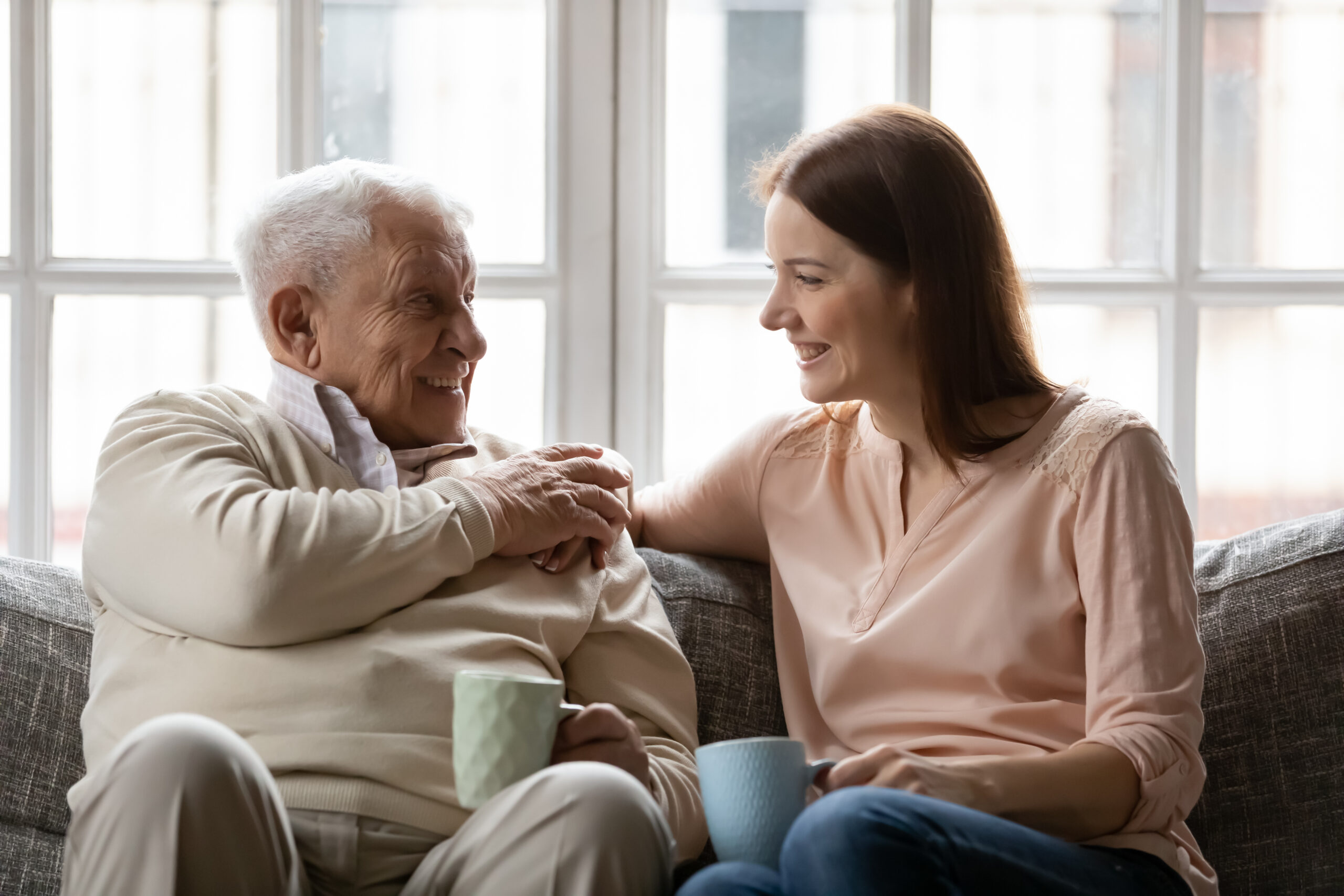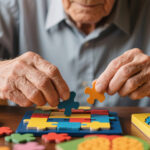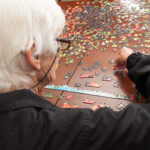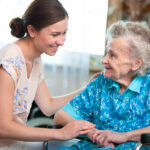Caring for a loved one with dementia is a journey filled with unique challenges and profound emotional experiences. As dementia progresses, the familiar surroundings of home can sometimes become sources of confusion or even danger. Ensuring a safe home environment is not merely about preventing accidents; it’s about preserving dignity, fostering independence, and enhancing the overall quality of life for individuals living with dementia. This comprehensive guide aims to provide families and caregivers with empathetic insights and actionable strategies to transform their homes into havens of safety and comfort. We understand the immense responsibility you carry, and our goal is to offer practical solutions that bring peace of mind and support the well-being of your loved one.
Understanding the Challenges of Dementia in the Home
Dementia is a complex neurological condition that progressively impairs cognitive functions, affecting memory, thinking, problem-solving, and behavior. These changes can significantly impact an individual’s ability to navigate their home environment safely. It’s crucial for caregivers to understand these underlying challenges to implement effective safety measures.
Cognitive Changes and Their Impact on Safety
Memory loss is often the most recognized symptom of dementia, leading to forgotten tasks like turning off the stove or locking doors. Disorientation, particularly regarding time and place, can cause individuals to get lost within their own homes, leading to anxiety and potential hazards. Impaired judgment affects their ability to assess risks, such as recognizing a hot surface or understanding the danger of sharp objects. These cognitive shifts necessitate a proactive approach to home safety, as individuals may no longer be able to identify or respond to dangers they once easily managed.
Behavioral Changes
Dementia can also manifest in various behavioral changes that pose safety concerns. Wandering, for instance, is a common behavior where individuals may leave the house unsupervised, putting them at risk of getting lost or injured. Agitation, confusion, and restlessness can lead to impulsive actions or an increased likelihood of falls. Understanding these behaviors, recognizing their triggers, and adapting the environment accordingly are vital steps in maintaining safety.
Physical Challenges
Beyond cognitive and behavioral changes, dementia often brings physical challenges. Mobility issues, such as an unsteady gait or difficulty with balance, significantly increase the risk of falls. Vision and hearing impairments can make it harder to perceive obstacles or respond to auditory warnings. Weakened muscles and reduced coordination further contribute to physical vulnerability. Addressing these physical aspects through environmental modifications and assistive devices is paramount to preventing injuries and promoting continued mobility within-home mobility.
General Home Safety Principles
Creating a safe home environment for a person with dementia involves a holistic approach, focusing on prevention, accessibility, and comfort. These general principles form the foundation for more specific room-by-room modifications.
Decluttering and Clear Pathways
One of the simplest yet most effective safety measures is to declutter the home. Remove unnecessary furniture, decorative items, and throw rugs that can become tripping hazards. Ensure that pathways are wide, clear, and unobstructed, allowing for easy movement, especially if your loved one uses a walker or wheelchair. This not only prevents falls but also reduces visual clutter, which can be confusing for someone with dementia.
Adequate Lighting
Good lighting is essential for individuals with dementia, who may experience changes in vision and depth perception. Ensure all areas of the home are well-lit, especially hallways, staircases, and bathrooms. Use nightlights in bedrooms, bathrooms, and along pathways to prevent disorientation during nighttime awakenings. Natural light is also beneficial, so keep curtains and blinds open during the day. Consider motion-sensor lights in frequently used areas to provide illumination automatically.
Securing Hazardous Items
Many common household items can pose significant risks to a person with dementia. All medications, cleaning supplies, chemicals, tools, and sharp objects (knives, scissors) must be securely locked away or placed out of reach. This includes items like razors, nail clippers, and even toxic plants. If there are firearms in the home, they must be unloaded and stored in a locked cabinet, with ammunition stored separately. Remember, impaired judgment means your loved one may not recognize the danger these items present.
Locks and Alarms
To prevent wandering and ensure security, install locks on all exterior doors and windows. These locks should be out of sight or difficult for the person with dementia to manipulate, such as slide bolts placed high or low on the door frame. Consider using door and window alarms that alert caregivers if an exit point is opened. For internal doors, especially those leading to hazardous areas like basements or garages, similar locking mechanisms or alarms can be beneficial. However, avoid locking interior doors to bedrooms or bathrooms, as this can cause distress and prevent access in an emergency. Instead, remove locks from these doors or ensure they can be easily opened from both sides.
Room-by-Room Safety Modifications
Once the general safety principles are in place, it’s time to delve into specific areas of the home, tailoring modifications to the unique risks and functions of each room.
Living Room/Common Areas
The living room is often the heart of the home, a place for relaxation and social interaction. However, it can also harbor potential hazards.
Furniture Arrangement: Arrange furniture to create clear, wide pathways. Avoid cluttering the room with too many pieces. Ensure chairs and sofas are stable and easy to get in and out of. Consider furniture with rounded edges to prevent injury from accidental bumps. Removing Tripping Hazards: Eliminate throw rugs, loose cords, and any other items that could cause a fall. Secure carpets that are not fully tacked down. If possible, opt for low-pile carpeting or non-slip flooring. Ensure that electrical cords are neatly tucked away or secured to the wall. Securing Windows and Doors: Install child-proof locks or window guards on all windows, especially those on upper floors. Ensure that exterior doors in common areas are securely locked, perhaps with additional deadbolts placed out of easy sight or reach. Consider alarms that signal when a door or window is opened, particularly if wandering is a concern.
Kitchen Safety
The kitchen, with its sharp objects, hot surfaces, and cleaning supplies, presents numerous safety challenges for individuals with dementia.
Appliance Safety: Disconnect or remove knobs from the stove when not in use, or install safety covers. Consider a stove shut-off device that automatically turns off burners after a set time or if no activity is detected. Keep microwaves, toasters, and other small appliances out of reach or unplugged when not supervised. Ensure that refrigerator and freezer doors are easily accessible but consider alarms if there’s a risk of spoilage due to doors being left open. Storing Sharp Objects and Chemicals: All knives, scissors, and other sharp utensils must be stored in locked drawers or cabinets. Similarly, cleaning supplies, detergents, and any other toxic chemicals should be kept in a locked cabinet, preferably one that is not easily accessible. Remember that colorful packaging can be appealing, so secure these items diligently. Food Safety and Spoilage: Regularly check the refrigerator and pantry for expired or spoiled food, as individuals with dementia may not recognize or remember to discard unsafe items. Simplify food preparation by pre-portioning meals or using ready-to-eat options. If your loved one still participates in cooking, ensure close supervision.
Bathroom Safety
The bathroom is a high-risk area due due to slippery surfaces, hot water, and medications.
Grab Bars and Non-Slip Surfaces: Install grab bars near the toilet and in the shower/bathtub. Use non-slip mats or strips in the shower and on the bathroom floor. A shower chair or bench can also enhance safety and comfort during bathing. Water Temperature Control: Set the water heater thermostat to a maximum of 120°F (49°C) to prevent scalding. Consider anti-scald devices for faucets and showerheads. Always test water temperature before your loved one bathes or showers. Securing Medications and Cleaning Supplies: All medications, both prescription and over-the-counter, must be stored in a locked cabinet, out of sight and reach. Similarly, cleaning products, cosmetics, and personal care items that could be ingested should be secured. Remove any items that could be mistaken for food or drink.
Bedroom Safety
The bedroom should be a sanctuary, but it also requires careful attention to safety.
Bed Height and Placement: Ensure the bed is at an appropriate height, allowing your loved one to get in and out easily. If wandering is a concern, consider placing the bed against a wall to reduce the risk of falls from both sides. Bed rails can be used with caution, ensuring they do not pose an entrapment risk. Nightlights: Install automatic nightlights that illuminate pathways to the bathroom and other frequently used areas. This helps prevent disorientation and falls during nighttime awakenings. Monitoring Devices: Consider using a baby monitor or a pressure-sensitive mat beside the bed that alerts you if your loved one gets up during the night. This can be particularly helpful for individuals prone to wandering or falls.
Entrances and Exits
Managing entrances and exits is crucial, especially for individuals with a tendency to wander.
Door and Window Locks (Out of Sight): Install additional locks on all exterior doors and accessible windows. These locks should be difficult for the person with dementia to operate or locate, such as slide bolts placed high or low, or key-operated locks. Avoid traditional deadbolts that can be easily unlocked. Alarms for Wandering: Door and window alarms can provide an early warning if your loved one attempts to leave the house unsupervised. These can be simple chimes or more sophisticated systems that alert a caregiver’s pager or phone. Consider a GPS tracking device for individuals who are prone to wandering outside the home. Clear Pathways Outside: Ensure that pathways leading to and from the house are well-lit, clear of obstacles, and free from ice or debris. Secure gates and fences if there is a yard, creating a safe outdoor space for supervised activity.
Addressing Specific Dementia-Related Behaviors
Beyond general safety modifications, understanding and responding to specific dementia-related behaviors is key to maintaining a safe and calm home environment.
Wandering
Wandering is a common and often distressing behavior in dementia, driven by confusion, restlessness, or a search for something or someone. To mitigate the risks: Alarms: Utilize door and window alarms to alert caregivers if a person attempts to leave. Pressure-sensitive mats can also be placed near beds or exits. Secure Perimeters: Ensure all exterior doors and windows are securely locked, preferably with locks that are difficult for the individual to manipulate or are out of their direct line of sight. Fences and gates around the property can provide a safe outdoor space while preventing unsupervised exits. Identification: Ensure the person carries some form of identification, such as a medical alert bracelet or a card in their pocket, with contact information. GPS tracking devices can also be invaluable for individuals prone to wandering outside the home. Routine and Engagement: A structured daily routine and engaging activities can reduce restlessness and the urge to wander. Regular supervised walks can also help satisfy the need for movement.
Agitation/Confusion
Agitation and confusion can arise from various triggers, including overstimulation, pain, fatigue, or changes in routine. A safe environment helps minimize these episodes: Creating a Calm Environment: Reduce noise, clutter, and excessive stimulation. Soft lighting, soothing music, and familiar objects can create a more tranquil atmosphere. Routine: Maintain a consistent daily routine for meals, activities, and sleep. Predictability can reduce anxiety and confusion. Reducing Triggers: Identify and minimize triggers for agitation. This might include avoiding crowded places, loud noises, or complex tasks. Simplify choices and instructions. Validation and Reassurance: Respond to confusion with empathy and reassurance, rather than correction. Validate their feelings and redirect their attention gently.
Falls
Falls are a leading cause of injury in older adults, and the risk is significantly higher for individuals with dementia due to gait disturbances, balance issues, and impaired judgment. Preventative measures are crucial: Exercise: Encourage regular, supervised physical activity to maintain strength, balance, and flexibility. Consult with a doctor or physical therapist for appropriate exercises. Proper Footwear: Ensure the person wears well-fitting, supportive shoes with non-slip soles, even indoors. Avoid loose slippers or walking in socks. Assistive Devices: Utilize assistive devices such as walkers, canes, or grab bars as recommended by healthcare professionals. Ensure they are used correctly and are in good condition. Clear Pathways and Lighting: Reiterate the importance of decluttered pathways and adequate lighting, especially at night. Mark edges of steps with contrasting tape. Regular Vision and Hearing Checks: Ensure vision and hearing aids are up-to-date and used consistently, as sensory impairments can increase fall risk.
The Role of Professional Support
While creating a safe home environment is paramount, caregivers often find themselves needing additional support. Recognizing when and how to seek professional help is a sign of strength and can significantly enhance the quality of care for your loved one and alleviate caregiver burden.
When to Consider In-Home Dementia Care
As dementia progresses, the demands of caregiving can become overwhelming. There may come a point when the level of care required exceeds what family members can realistically provide. This is when considering in-home dementia care becomes a vital option. Professional caregivers can provide assistance with daily activities, medication management, personal care, and specialized dementia support, allowing your loved one to remain in the comfort and familiarity of their own home for longer.
Benefits of Specialized Dementia Caregivers
Not all caregivers are equipped to handle the unique challenges of dementia. Specialized dementia caregivers possess specific training and experience in managing cognitive and behavioral symptoms. They understand the nuances of communication with dementia patients, can implement therapeutic activities, and are skilled in de-escalating agitation and confusion. Their expertise ensures a higher standard of care and a more stable environment.
Understanding 24-Hour Care Options
For individuals with advanced dementia or those with significant wandering tendencies or complex medical needs, 24-hour care may become necessary. This can involve a team of caregivers providing continuous supervision and assistance, ensuring safety around the clock. This level of care provides immense peace of mind for families, knowing their loved one is always safe and attended to, even during the night.
Transitional Care Services
Transitions, such as moving from a hospital back home, can be particularly challenging for individuals with dementia, often leading to increased confusion and anxiety. Transitional care services can provide crucial support during these periods, ensuring a smooth and safe return to the home environment. These services often include medication reconciliation, home safety assessments, and coordination of follow-up appointments, minimizing the risk of readmission and promoting recovery.
Hospital Stays and Medical Emergencies
Despite the best home safety measures, hospital stays or medical emergencies can arise. These situations are often highly disorienting and frightening for dementia patients, who may struggle to understand their surroundings or cooperate with medical staff. The unfamiliar environment, bright lights, loud noises, and constant changes in personnel can exacerbate confusion and agitation.
Specialized Hospital Sitting Services
During hospitalizations, the presence of a familiar and trained individual can make a profound difference. This is where specialized hospital sitting services become invaluable. These sitters are experienced in dementia care and can provide continuous one-on-one supervision, companionship, and advocacy for your loved one in the hospital setting. They help to reduce anxiety, prevent falls, ensure communication with medical staff, and provide a calming presence, allowing family caregivers to rest assured that their loved one is receiving attentive and compassionate support during a vulnerable time.
Maintaining a Supportive and Engaging Environment
Creating a safe physical environment is only one part of the equation. A truly safe home for a person with dementia also fosters emotional well-being, cognitive stimulation, and social connection.
Stimulating Activities
Engaging the individual in meaningful activities can reduce boredom, agitation, and wandering. These activities should be tailored to their interests and abilities, focusing on success rather than perfection. Examples include: Simple Chores: Folding laundry, setting the table, or watering plants. Creative Pursuits: Painting, drawing, listening to music, or singing. Cognitive Games: Simple puzzles, card games, or reminiscing through old photographs. Outdoor Time: Supervised walks in a safe garden or park, enjoying nature.
Social Interaction
Isolation can accelerate cognitive decline and lead to depression. Encourage regular, positive social interactions: Family Visits: Facilitate visits from family and friends, ensuring interactions are calm and supportive. Support Groups: Consider local dementia support groups or day programs that offer structured social activities. Pet Therapy: If appropriate, a pet can provide companionship and comfort.
Personalization of Space
Familiarity and personal touches can provide comfort and reduce confusion. Personalize their living space with: Familiar Objects: Display cherished photographs, mementos, and favorite items. Clear Labeling: Use clear, simple labels with words and pictures for drawers, cupboards, and rooms. Consistent Layout: Avoid frequently rearranging furniture or changing the decor, as consistency helps with orientation.
Conclusion
Creating a safe and supportive home environment for a loved one with dementia is an ongoing act of love, patience, and adaptation. It requires vigilance, creativity, and a deep understanding of the unique challenges posed by the disease. By implementing thoughtful modifications, addressing behavioral changes with empathy, and leveraging professional support when needed, families can transform their homes into havens where individuals with dementia can live with dignity, comfort, and a sense of security. Remember, you are not alone in this journey. Seek support from family, friends, and professional services, and celebrate every small victory. The goal is not just to prevent harm, but to enrich the lives of those living with dementia, ensuring their remaining years are filled with as much peace, joy, and independence as possible. Your dedication makes an immeasurable difference.















